Table of Contents
- Understanding Consumer Surplus
- Consider a simple example
- Marketing’s Role in Creating Consumer Surplus
- Information and Transparency
- Price Competition
- Product Differentiation
- Innovation and Quality Improvement
- Accessibility
- Economic Welfare and Societal Benefits
- Increased Standard of Living
- Resource Allocation
- Economic Growth
- Innovation and Entrepreneurship
In today’s interconnected world, marketing plays a pivotal role in shaping consumer preferences and driving economic activity. Beyond the realm of sales and advertising, marketing has a profound impact on society’s well-being through the concept of consumer surplus. This economic principle illustrates how marketing benefits society by creating value for consumers and fostering economic welfare.
In today’s interconnected world, marketing serves as a linchpin in shaping not only consumer preferences but also the broader economic landscape. Its influence transcends mere sales and advertising, extending to the intricate concept of consumer surplus. This economic principle underscores the profound ways in which marketing contributes to society’s well-being by enhancing the quality of life and promoting economic welfare.
Enhanced Product Quality and Innovation: Effective marketing incentivizes businesses to continually improve their products and innovate. As companies compete for consumers’ attention and loyalty, they strive to offer better quality, more feature-rich, and innovative products. This leads to a continuous cycle of improvement, where consumers benefit from higher-quality goods and services.
Competitive Pricing: Marketing encourages price competition among businesses. Through various pricing strategies, promotions, and discounts, companies aim to attract and retain customers. This competitive environment often results in lower prices, making goods and services more affordable and accessible to a broader spectrum of the population.
Information Dissemination: Marketing serves as a vital channel for disseminating information about products and services. It empowers consumers with knowledge about their options, enabling them to make informed choices that align with their preferences and needs. Informed choices lead to more satisfying purchases and reduce the likelihood of buyer’s remorse.
Tailored Offerings: Modern marketing relies heavily on data analytics and consumer insights. This allows businesses to tailor their offerings to match individual preferences. As a result, consumers can find products and services that align with their specific tastes and requirements, enhancing their overall satisfaction.
Economic Growth and Job Creation: The marketing industry itself contributes significantly to economic growth by generating jobs in areas such as advertising, market research, and digital marketing. Moreover, by boosting demand for products and services, effective marketing stimulates economic activity across various sectors, leading to job creation and economic expansion.
Consumer Satisfaction and Loyalty: Marketing strategies often emphasize building lasting relationships with customers. Brands that prioritize customer satisfaction and loyalty not only thrive in the market but also contribute to a sense of trust and reliability in the business world. Satisfied customers tend to be loyal customers, benefiting both consumers and companies.
Social Impact: Marketing campaigns can be leveraged to raise awareness about important social and environmental issues. Many brands now use their platforms to advocate for causes like sustainability, diversity, and social justice. Such initiatives not only promote positive change but also reflect consumers’ values and aspirations.
Global Reach: In the age of globalization, marketing allows businesses to reach a global audience. This opens up new markets and opportunities for both consumers and companies. Consumers can access a wider array of products, while businesses can expand their reach and impact.
In sum, marketing is not merely a mechanism for promoting products; it is a dynamic force that shapes economic progress and societal well-being. Through the concept of consumer surplus, it becomes evident that marketing creates a virtuous cycle, where businesses strive to meet consumer needs and aspirations, leading to greater value, satisfaction, and prosperity for individuals and society as a whole.
To expand your knowledge on this subject, make sure to read on at this location: Welfare Economics Explained: Theory, Assumptions, and Criticism
Understanding Consumer Surplus
Consumer surplus is a fundamental concept in economics that quantifies the net benefit consumers receive when they purchase a product or service at a price lower than what they are willing to pay. In simpler terms, it represents the additional satisfaction consumers derive from a good or service when they pay less for it than they would be willing to. This surplus arises due to the price consumers are willing to pay being higher than the actual market price.
Understanding consumer surplus is not only fundamental in economics but also essential for businesses and policymakers. It’s a concept that delves into the intricate relationship between consumers and the products or services they purchase. Here’s an extended exploration of the idea:
Efficiency of Markets: Consumer surplus serves as a measure of market efficiency. When consumers are able to purchase goods and services at prices lower than their maximum willingness to pay, it indicates that markets are operating efficiently, and resources are allocated optimally.
Consumer Choice and Utility: Consumer surplus is a reflection of consumer choice and utility maximization. It highlights that consumers make rational decisions to maximize their well-being by purchasing products or services that provide more value than the price they pay.
Price Elasticity: The concept of consumer surplus is closely tied to price elasticity of demand. Understanding the elasticity of demand helps businesses and policymakers predict how changes in price will affect consumer surplus. Inelastic demand may lead to larger surpluses when prices decrease.
Pricing Strategies: Businesses can strategically use consumer surplus analysis to inform pricing strategies. For instance, dynamic pricing models can capture varying levels of consumer surplus, allowing businesses to offer discounts to price-sensitive consumers while still charging higher prices to those willing to pay more.
Social Welfare: Consumer surplus is a component of social welfare, which also includes producer surplus and government revenue. Policymakers use these measures to evaluate the overall impact of economic policies and regulations.
Consumer Welfare Policies: Policymakers can use consumer surplus as a guiding metric when designing policies aimed at protecting consumer welfare. It helps in assessing the potential effects of price controls, taxation, or regulations on consumer well-being.
Market Competition: Competitive markets tend to generate larger consumer surpluses. Businesses operating in competitive environments are compelled to offer lower prices and better value to consumers, resulting in increased surplus.
Product Differentiation: Brands that effectively differentiate their products often have greater flexibility in pricing. By creating unique value propositions, they can command higher prices and still provide consumers with surplus.
Consumer Behavior: Consumer surplus analysis provides insights into consumer behavior, preferences, and sensitivity to price changes. Businesses can use this information to tailor marketing strategies and product offerings.
Consumer Loyalty: Generating consumer surplus can foster customer loyalty. When consumers consistently receive value and satisfaction from a brand, they are more likely to become repeat customers and advocates.
Government Intervention: Governments can intervene in markets to redistribute consumer surplus. For instance, subsidies may be used to lower prices on essential goods and ensure that consumers across income levels can access them.
Price Discrimination: Businesses may engage in price discrimination to capture different levels of consumer surplus from different segments of the market. This strategy involves charging different prices to different groups based on their willingness to pay.
Consumer Satisfaction: A growing consumer surplus is often indicative of high levels of consumer satisfaction. It reflects that consumers are content with their purchasing decisions and are not experiencing buyer’s remorse.
In summary, consumer surplus is not merely a theoretical concept; it has real-world implications for businesses, policymakers, and consumers themselves. It underscores the dynamic interplay of supply and demand in markets, the importance of understanding consumer preferences, and the potential for businesses to create value and build loyalty through strategic pricing and product differentiation. For policymakers, it offers a lens through which to evaluate the impact of economic policies on consumer welfare and market efficiency.
Explore this link for a more extensive examination of the topic: CHAPTER 5
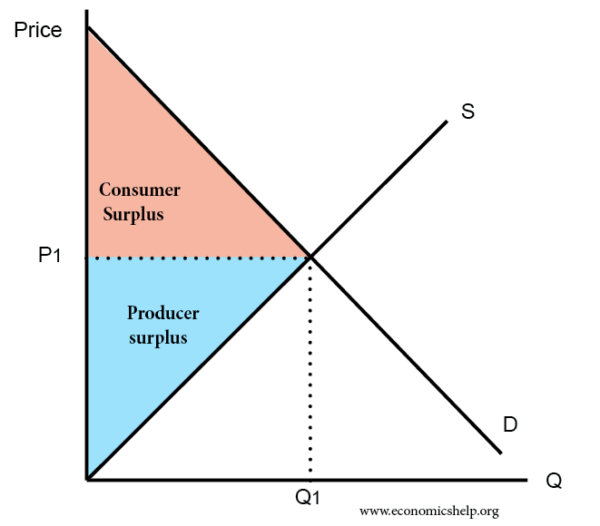
Consider a simple example
Imagine you are willing to pay $50 for a concert ticket, but you find one for sale at $30. In this case, your consumer surplus is $20 ($50 – $30). This concept applies to countless transactions in our daily lives, from groceries to electronics, and it has far-reaching implications for economic welfare.
Imagine you’re strolling through a bustling farmer’s market on a sunny weekend morning. The aroma of freshly baked bread, the vibrant colors of ripe fruits, and the sound of live music create a delightful atmosphere. You come across a stall selling artisanal handcrafted jams and preserves, and your favorite flavor, raspberry, catches your eye.
You’ve tasted this exquisite raspberry jam before and would willingly pay $10 for a small jar to enjoy on your weekend breakfast toast. However, the vendor has just set the price at $5 per jar as a special promotion. The prospect of indulging in this delectable treat at a lower cost than you anticipated immediately appeals to you.
In this scenario, your consumer surplus isn’t just a financial gain; it’s the embodiment of the extra value you derive from this transaction. Your willingness to pay was $10, but you only had to part with $5. Your consumer surplus, therefore, amounts to $5 ($10 – $5). This extra satisfaction, the joy of acquiring a product you cherish at a lower cost, is what economists call consumer surplus.
Now, as you savor that delicious raspberry jam on your toast, it becomes evident that the concept of consumer surplus extends far beyond concert tickets and artisanal jams. It permeates our daily lives, affecting choices ranging from groceries to electronics, housing, and even services like streaming subscriptions.
Every time you snag a discount on a sweater, purchase a smartphone during a Black Friday sale, or secure a great deal on your monthly gym membership, you experience consumer surplus. It represents the tangible benefit you gain when the price you pay for a product or service is lower than what you were willing to pay.
Consumer surplus plays a pivotal role in economics and overall societal welfare. It highlights the efficiency and fairness of markets. When consumers can obtain products or services at prices lower than their perceived value, it not only increases their well-being but also encourages consumption and economic activity. Additionally, competition among producers often drives prices closer to consumers’ willingness to pay, leading to a more equitable distribution of resources and wealth.
In a broader sense, understanding consumer surplus helps policymakers make informed decisions about taxation, subsidies, and regulations that can impact markets. It also sheds light on issues like income inequality, as those with higher incomes can often enjoy more substantial consumer surpluses, while lower-income individuals may face barriers to accessing certain goods and services.
So, as you relish your raspberry jam and reflect on the $5 you saved, remember that the concept of consumer surplus is more than just a mathematical calculation. It represents the countless ways in which our economic choices affect our daily lives, and it underscores the intricate interplay between individual preferences, market dynamics, and societal well-being.
To expand your knowledge on this subject, make sure to read on at this location: GDP as a Measure of Economic Well-being

Marketing’s Role in Creating Consumer Surplus
Marketing strategies are designed to attract consumers and influence their purchasing decisions. Through various tactics like advertising, promotions, and branding, marketers aim to make their products or services more appealing, often creating a perception of higher value. This enhanced value perception often translates into a larger consumer surplus.
nullFor a comprehensive look at this subject, we invite you to read more on this dedicated page: A Theory of Marketing’s Contribution to Customers’ Perceived Value …
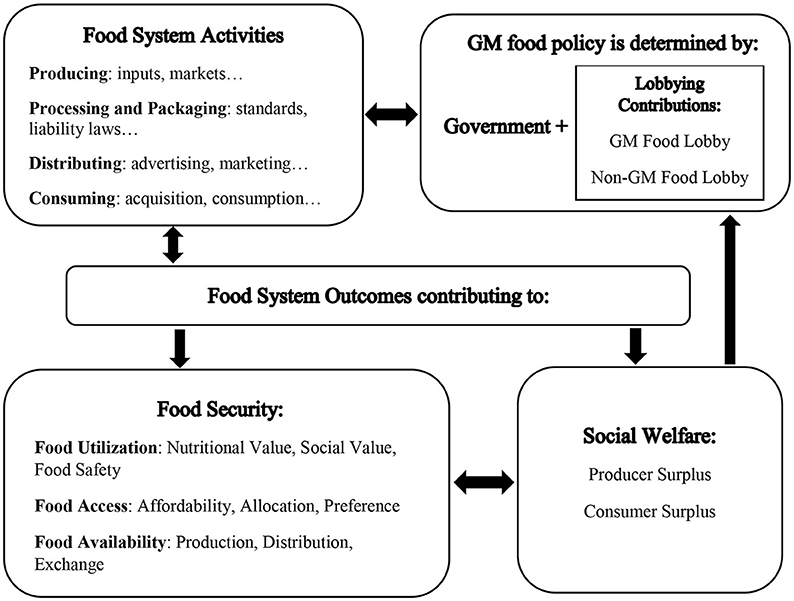
Information and Transparency
Marketing provides consumers with information about products and services. By educating consumers about the features, benefits, and prices of various options, marketing empowers them to make informed choices. This transparency ensures that consumers are more likely to find products that align with their preferences, increasing their overall satisfaction.
Marketing serves as the bridge between consumers and the wide array of products and services available in the marketplace. Its role extends beyond promotion; it is a vital source of information that empowers consumers and enhances their overall satisfaction.
In a world with countless choices, marketing acts as an educational tool. It goes beyond just showcasing products; it delves into the details, highlighting the features and benefits that differentiate one option from another. This comprehensive information equips consumers with the knowledge they need to make choices that align with their specific needs and desires.
One of the critical aspects of marketing’s educational role is transparency. By openly providing information about prices, quality, ingredients, and environmental impacts, marketing ensures that consumers can make informed decisions. This transparency not only builds trust between consumers and brands but also fosters a sense of control for consumers, as they know exactly what they are investing in.
Furthermore, marketing doesn’t stop at the point of purchase. It continues to provide support and information even after the sale. Through customer reviews, user guides, and educational content, it helps consumers maximize their product or service experiences. This post-purchase engagement not only ensures that consumers derive the most value from their purchases but also strengthens their brand loyalty and satisfaction.
The empowerment of consumers through marketing’s educational role has several positive ripple effects. Informed consumers are more likely to be satisfied with their choices, reducing the likelihood of buyer’s remorse. They are also more likely to become loyal customers, as they trust the brand to consistently meet their needs. Additionally, by aligning consumers with products that genuinely suit their preferences, marketing contributes to reducing waste and the environmental impact associated with mismatched purchases.
In conclusion, marketing serves as a valuable source of information and empowerment for consumers. Its role in educating consumers about products and services, promoting transparency, and providing ongoing support ultimately leads to more satisfied and empowered consumers. This, in turn, fosters trust and loyalty between consumers and brands, contributing to a more sustainable and customer-centric marketplace.
For a comprehensive look at this subject, we invite you to read more on this dedicated page: The Fed Explained: What the Central Bank Does
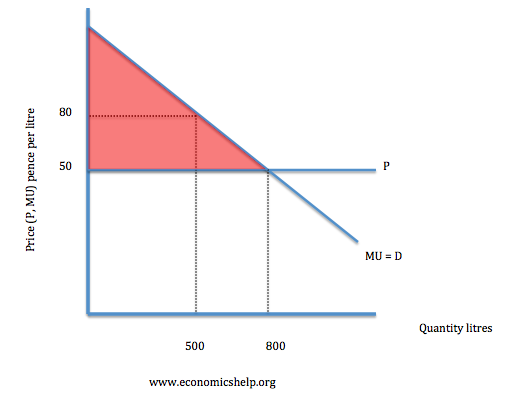
Price Competition
Marketing fosters competition among businesses. When companies vie for consumers’ attention and dollars, they often lower prices or offer better value. This price competition directly benefits consumers by reducing the prices they pay for goods and services, thereby increasing their consumer surplus.
Marketing, as a driving force behind competition among businesses, serves as a catalyst for innovation and improvement in various aspects of the consumer experience. When companies vigorously compete for consumers’ attention and spending, they are compelled to explore innovative strategies beyond just price reductions. This intense rivalry benefits consumers in multifaceted ways, expanding beyond the mere reduction of prices.
Enhanced Product Quality: Competition instigated by marketing compels businesses to continually enhance the quality of their products and services. They invest in research and development, leading to products that are not only affordable but also better in terms of performance, durability, and features. Consumers, therefore, receive products that not only cost less but also offer superior value.
Diverse Choices: Marketing-driven competition often results in a wider array of choices for consumers. Companies strive to differentiate themselves by offering unique features, styles, or customization options. This diversity of choices allows consumers to find products or services that align more closely with their specific needs and preferences.
Innovative Solutions: To stand out in a crowded marketplace, companies are motivated to come up with innovative solutions to common problems. Marketing campaigns often highlight these innovations, making consumers aware of cutting-edge technologies or approaches that can improve their lives or simplify tasks.
Improved Customer Service: Companies aiming to outshine their competitors recognize the importance of exceptional customer service. They invest in training, technology, and streamlined processes to provide a superior customer experience. This means quicker response times, better issue resolution, and overall higher customer satisfaction.
Transparent Information: Marketing fosters transparency as companies compete to gain consumers’ trust. They are more inclined to provide accurate and detailed information about their products and services, helping consumers make informed choices. This transparency reduces the risk of hidden costs or unexpected surprises.
Lower Prices Beyond the Product: While price competition remains central, marketing also drives businesses to lower the overall cost of ownership. This includes reduced maintenance costs, longer product lifespans, and more efficient energy consumption, which can lead to substantial long-term savings for consumers.
Environmental and Social Responsibility: In response to consumer demand and competitive pressure, companies often adopt more environmentally and socially responsible practices. They may produce eco-friendly products, support fair labor practices, or engage in philanthropic activities. Consumers benefit from knowing that their purchases align with their values.
Convenience and Accessibility: Marketing extends the reach of businesses, making products and services more accessible through various channels such as e-commerce, mobile apps, or local distribution centers. This increased accessibility and convenience simplify consumers’ lives.
Customized Offers: Data-driven marketing allows companies to tailor their offerings to individual consumer preferences. This personalization results in consumers receiving offers, discounts, and promotions that are more relevant to their interests and needs.
Marketplace Evolution: Marketing-driven competition can lead to the emergence of entirely new market segments and industries. As companies vie for market share, they may discover untapped opportunities, creating entirely new product categories that cater to emerging consumer trends.
In conclusion, marketing’s role in fostering competition among businesses extends far beyond price reductions. It fuels a dynamic environment where companies constantly strive to outdo each other in terms of product quality, customer service, innovation, and overall consumer value. As a result, consumers not only enjoy lower prices but also benefit from a wide range of choices, improved product quality, and a more enriching overall experience in the marketplace.
Looking for more insights? You’ll find them right here in our extended coverage: Welfare Standards Underlying Antitrust Enforcement: What You …

Product Differentiation
Marketers work to differentiate their products or services from competitors. This differentiation often leads to more choices in the marketplace, allowing consumers to find products that better match their specific needs and preferences. As consumers find better-suited options, their satisfaction and consumer surplus rise.
Marketers continually strive to distinguish their products or services in a crowded marketplace. This pursuit of differentiation not only fosters healthy competition but also brings about a proliferation of choices for consumers. In this dynamic landscape, consumers are no longer limited to a one-size-fits-all approach; instead, they can explore an array of offerings tailored to their unique needs and preferences.
This abundance of options is akin to a treasure trove for consumers. It empowers them to make more informed decisions, ultimately enhancing their overall satisfaction. As consumers discover products or services that align closely with their specific requirements, they experience a tangible rise in their contentment levels. This heightened satisfaction is not only attributed to finding products that better cater to their needs but also to the psychological fulfillment of having choices that align with their individual tastes.
Moreover, this surge in consumer satisfaction extends beyond the immediate purchase experience. When consumers consistently encounter options that resonate with them, it fosters brand loyalty and trust. This, in turn, can lead to long-term customer relationships, benefiting both consumers and businesses. Additionally, as consumers feel more satisfied with their choices, their consumer surplus – the difference between what they’re willing to pay and what they actually pay – increases. This boost in consumer surplus signifies that consumers are getting more value for their money, which is a significant driver of customer loyalty and positive word-of-mouth recommendations.
In conclusion, the efforts of marketers to differentiate their products or services have a profound impact on the marketplace. They not only create a competitive environment that fuels innovation but also provide consumers with a diverse array of choices. This, in turn, enhances consumer satisfaction, fosters brand loyalty, and leads to an increase in consumer surplus. Ultimately, the dynamic interplay between differentiation and consumer choice contributes positively to both the business and consumer landscapes.
For additional details, consider exploring the related content available here Innovation and competition: The role of the product market …

Innovation and Quality Improvement
Marketing encourages companies to innovate and improve the quality of their offerings. New and improved products or services often provide more value to consumers, increasing their willingness to pay and expanding their consumer surplus.
nullFor additional details, consider exploring the related content available here GDP as a Measure of Economic Well-being

Accessibility
Marketing can also help bring products to new markets or demographics, making them more accessible to a wider range of consumers. This increased accessibility can lead to a broader distribution of consumer surplus across society.
Expanding on the idea that marketing enhances accessibility and widens the distribution of consumer surplus across society:
“Marketing serves as a powerful conduit for product accessibility and inclusivity, enabling businesses to reach new markets, demographics, and communities that may have previously been underserved or overlooked. This broadened reach not only fosters economic growth but also has profound societal implications, as it redistributes the benefits of consumer surplus more equitably across various segments of the population.
Breaking Down Barriers: Effective marketing strategies can break down geographical, cultural, and socioeconomic barriers that often limit access to products and services. By understanding the diverse needs and preferences of different consumer groups, businesses can tailor their marketing efforts to resonate with a broader audience, thereby reducing disparities in access.
Affordability and Choice: Marketing initiatives that emphasize value propositions, discounts, or innovative pricing models can make products more affordable and accessible to a wider range of consumers. This not only increases consumer choice but also ensures that essential and desirable goods are within reach for more people.
Inclusivity and Representation: Inclusive marketing practices that celebrate diversity and represent a variety of voices, cultures, and identities resonate with marginalized or underrepresented communities. Such efforts not only enhance the accessibility of products but also foster a sense of belonging and representation, contributing to social cohesion.
Economic Empowerment: Widening the distribution of consumer surplus through marketing can have a cascading effect on economic empowerment. When previously underserved communities gain access to products and services, they often experience improved quality of life, job opportunities, and entrepreneurship prospects, which, in turn, stimulate economic growth.
Education and Awareness: Marketing can also play a role in educating consumers about products and their benefits. In doing so, it empowers individuals to make informed choices that align with their needs and preferences, further enhancing their overall well-being.
Social Welfare: As marketing campaigns reach previously untapped markets, they can contribute to the redistribution of wealth and resources, promoting social welfare and reducing income inequality. This redistribution of consumer surplus can have positive ramifications for overall societal stability and prosperity.
Innovation and Responsiveness: Marketing encourages businesses to stay innovative and responsive to changing consumer demands. This continuous evolution in product offerings ensures that consumers have access to updated, improved, and more relevant options, regardless of their demographic or geographic location.
In conclusion, marketing’s role in expanding product accessibility is not merely a business strategy but a force for social change. By extending the benefits of consumer surplus to a broader spectrum of society, marketing contributes to a fairer and more inclusive marketplace. This, in turn, has far-reaching effects on economic growth, social equity, and the overall well-being of communities, making it a vital component of modern commerce with profound societal implications.”
For a comprehensive look at this subject, we invite you to read more on this dedicated page: Ecosystem accounting: Reconciling consumer surplus and …

Economic Welfare and Societal Benefits
Consumer surplus isn’t just a theoretical concept; it has practical implications for economic welfare and societal well-being. When marketing activities lead to higher consumer surplus, several positive outcomes occur:
Consumer surplus isn’t just a theoretical concept; it has practical implications for economic welfare and societal well-being. When marketing activities lead to higher consumer surplus, several positive outcomes occur, illustrating the tangible benefits that this economic concept can bring to both individuals and society at large:
Enhanced Purchasing Power: Higher consumer surplus means individuals can purchase more of the goods and services they need and desire. This increased purchasing power not only improves their quality of life but also stimulates economic growth by boosting demand across various industries.
Poverty Alleviation: When marketing strategies effectively lower prices or increase the perceived value of products, it can have a direct impact on poverty alleviation. Access to affordable and desirable goods and services can significantly improve the living conditions of low-income individuals and families.
Resource Allocation Efficiency: A greater consumer surplus signifies that resources are being allocated more efficiently in the economy. Producers respond to consumer preferences, directing resources toward products and services that provide the most value. This efficient allocation can lead to the optimal use of resources and reduced waste.
Increased Competitiveness: Consumer surplus encourages businesses to continually innovate and improve their offerings to stay competitive. This drive for competitiveness fosters an environment of continuous improvement and innovation, which benefits consumers through better products, lower prices, and increased choices.
Economic Resilience: Societies with a robust consumer surplus are better equipped to weather economic shocks and uncertainties. When individuals have extra financial resources due to a surplus, they are better prepared to cope with unexpected events such as recessions, medical emergencies, or natural disasters.
Quality of Life Improvement: Beyond the financial aspect, a higher consumer surplus also leads to an improved overall quality of life. Consumers can access a wider range of experiences, goods, and services that contribute to their well-being, satisfaction, and happiness.
Entrepreneurship and Innovation: A thriving consumer surplus ecosystem incentivizes entrepreneurs to create innovative solutions to meet consumer needs and desires. This entrepreneurial spirit can lead to the development of groundbreaking technologies and industries, further advancing societal progress.
Global Trade Opportunities: Higher consumer surplus can also drive international trade by making domestic goods more affordable and competitive in global markets. This not only benefits consumers domestically but can also open up export opportunities, bolstering a country’s economy.
Health and Education: Consumer surplus can extend to essential services like healthcare and education. When marketing strategies lead to cost-effective access to these services, it can result in healthier, more educated populations, which are essential for long-term societal development.
In summary, consumer surplus is far from being just a theoretical concept; it has concrete and far-reaching implications for economic welfare and societal well-being. By examining how marketing activities can contribute to an increased consumer surplus, we gain a deeper appreciation for the profound impact that effective marketing can have on individuals and society as a whole. It underscores the importance of fostering an environment where businesses can create value for consumers, leading to a more prosperous and satisfying life for everyone.
Should you desire more in-depth information, it’s available for your perusal on this page: The economic & social benefits of air transport
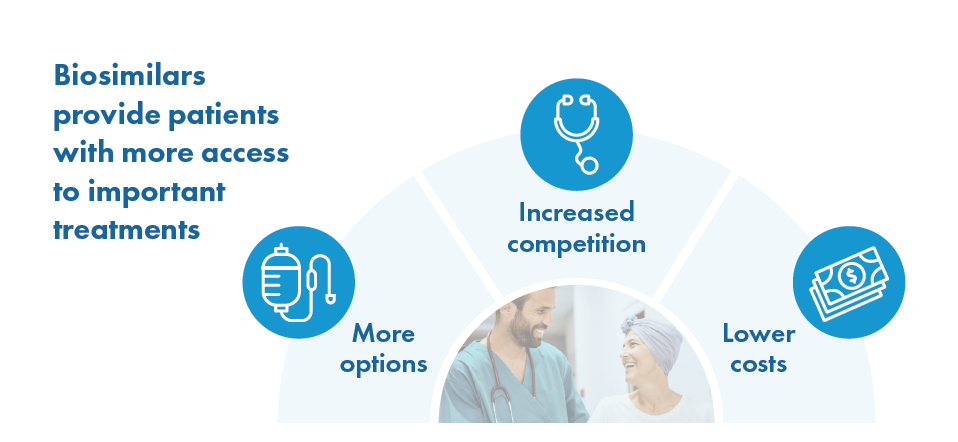
Increased Standard of Living
Higher consumer surplus means consumers can enjoy more goods and services for the same budget. This effectively raises their standard of living, as they can afford more of the things they desire.
Higher consumer surplus means consumers can enjoy more goods and services for the same budget. This effectively raises their standard of living, as they can afford more of the things they desire. This improvement in living standards has far-reaching implications that extend beyond individual well-being:
Economic Growth: When consumers have more disposable income due to a higher consumer surplus, they are more likely to spend it on goods and services. This increased consumer spending can stimulate economic growth, as businesses respond to higher demand by expanding production, hiring more employees, and investing in innovation.
Incentive for Innovation: A larger consumer surplus can incentivize businesses to innovate and offer new and improved products. They do this to capture a larger share of the consumer surplus and stay competitive in the market. This innovation can lead to technological advancements and greater product variety.
Market Efficiency: A higher consumer surplus can indicate that markets are functioning efficiently. When consumers are able to find the products they want at prices they are willing to pay, it suggests that resources are allocated effectively, minimizing waste and inefficiency.
Wealth Distribution: A broad and healthy consumer surplus can contribute to a more equitable distribution of wealth. It allows a wider range of consumers to access essential goods and services, reducing income inequality and promoting social stability.
Quality of Life: Beyond material possessions, a higher standard of living can translate into an improved quality of life. Consumers can afford better healthcare, education, and leisure activities, leading to overall well-being and happiness.
Global Competitiveness: Nations with a population enjoying a higher consumer surplus are often more competitive on the global stage. They have a stronger domestic market, which can attract foreign investments and trade opportunities, further boosting their economic growth.
Entrepreneurship and Small Businesses: A thriving consumer surplus can encourage entrepreneurship and the growth of small businesses. Entrepreneurs are more likely to enter markets where consumers have the purchasing power to support new ventures.
Consumer Confidence: A consistently high consumer surplus can foster consumer confidence. When people feel financially secure, they are more willing to make long-term commitments such as buying homes or investing in education, which can have positive effects on the economy.
Social Welfare: Governments often use policies to enhance consumer surplus, particularly for essential goods and services like healthcare and education. This can contribute to improved social welfare, ensuring that basic needs are met for a larger portion of the population.
Environmental Considerations: While a higher consumer surplus can lead to increased consumption, it also creates an opportunity to promote sustainable and eco-friendly choices. Consumers with greater financial capacity may choose environmentally responsible products and services, driving a shift towards sustainability.
In summary, a higher consumer surplus is not only a boon for individual consumers but also a catalyst for economic growth, innovation, and societal well-being. It reflects the efficient allocation of resources, encourages investment and entrepreneurship, and can lead to a more balanced distribution of wealth, ultimately contributing to a more prosperous and equitable society.
To delve further into this matter, we encourage you to check out the additional resources provided here: Welfare Standards Underlying Antitrust Enforcement: What You …
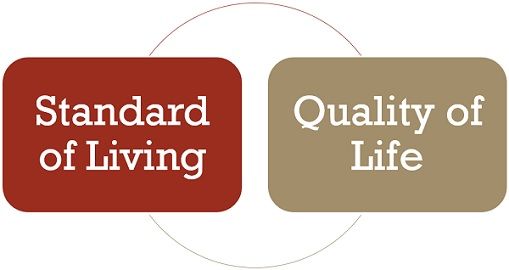
Resource Allocation
When consumers express their preferences through their willingness to pay, it guides producers to allocate resources efficiently. Producers are more likely to invest in industries and products that provide greater value to consumers.
nullDon’t stop here; you can continue your exploration by following this link for more details: Lesson Overview: Consumer and Producer Surplus (article) | Khan …

Economic Growth
As consumers enjoy a higher standard of living and allocate resources more efficiently, economic growth is stimulated. Greater consumer surplus contributes to increased spending and economic activity.
As consumers enjoy a higher standard of living and become adept at allocating their resources more efficiently, a virtuous cycle of economic growth is set in motion. This phenomenon has far-reaching implications and can be elaborated upon in several ways:
Innovation and Entrepreneurship: A higher standard of living often leads to increased disposable income. This, in turn, can fuel entrepreneurship and innovation. Individuals with more financial security are more likely to invest in new business ventures, creating a dynamic environment for economic growth.
Education and Skill Development: Improved standards of living are frequently accompanied by better access to education and skill development opportunities. A well-educated and skilled workforce is a cornerstone of economic growth as it can drive productivity and innovation across various industries.
Investment in Human Capital: Higher living standards encourage individuals to invest in their own human capital through training and education. This investment not only benefits the individual but also adds value to the labor force, making it more competitive on a global scale.
Consumer Confidence: As consumers experience a higher standard of living, they tend to have more confidence in the economy. This increased confidence can lead to greater consumer spending, which, in turn, stimulates economic activity and job creation.
Resource Allocation Efficiency: Improved resource allocation by consumers and businesses results in fewer wasteful expenditures. As resources are directed towards more productive uses, the overall efficiency of the economy increases, promoting sustainable economic growth.
Technological Advancements: A higher standard of living can drive demand for technological advancements. Consumers seek products and services that enhance their quality of life, prompting businesses to innovate. This technological progress can have a cascading effect on various industries, leading to increased productivity and economic growth.
Infrastructure Development: Economic growth often requires investment in infrastructure, such as transportation, communication networks, and energy systems. A higher standard of living can generate the resources needed for these critical infrastructure projects, which further support economic expansion.
Global Trade: When consumers have the means to enjoy a higher standard of living, they often become more active participants in the global economy. This can lead to increased international trade, benefiting both domestic and foreign markets and fostering economic growth on a global scale.
Poverty Reduction: As living standards rise, there is a greater potential to reduce poverty rates. A more equitable distribution of wealth and resources can lead to improved social stability and economic growth, as individuals previously marginalized from the economy become active contributors.
Sustainability Considerations: It’s essential to ensure that the pursuit of a higher standard of living aligns with sustainability goals. Sustainable practices can help maintain and enhance economic growth in the long term by preserving resources and ecosystems.
In summary, the connection between a higher standard of living and economic growth is a dynamic and multifaceted one. As consumers and societies experience improvements in their living conditions, they tend to contribute to economic growth through increased spending, innovation, and resource allocation efficiency. By fostering an environment that encourages and supports these positive trends, economies can thrive and create a better quality of life for their citizens.
You can also read more about this here: Welfare Economics Explained: Theory, Assumptions, and Criticism
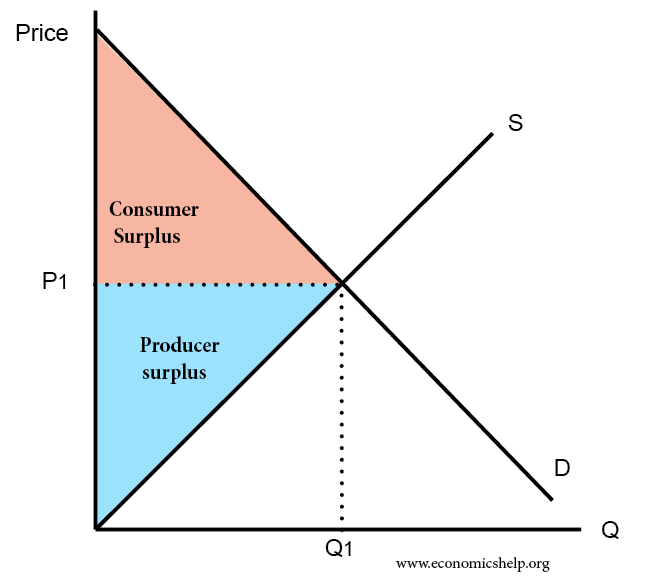
Innovation and Entrepreneurship
The potential for higher consumer surplus incentivizes entrepreneurs to create new businesses and innovative solutions, driving economic dynamism and progress.
The potential for higher consumer surplus incentivizes entrepreneurs to create new businesses and innovative solutions, driving economic dynamism and progress. Here’s how this process unfolds:
Entrepreneurial Ventures: Entrepreneurs identify gaps or unmet needs in the market, spurred by the prospect of providing consumers with better products, services, or experiences. This drive fuels the creation of startups and new business ventures.
Innovation: The pursuit of consumer surplus often leads to innovation. Entrepreneurs seek ways to enhance efficiency, quality, or affordability, which can result in groundbreaking technologies and disruptive business models. Innovation becomes the catalyst for economic growth.
Competition: As new businesses enter the market and existing ones innovate, competition intensifies. This competition benefits consumers by offering them a wider range of choices and driving prices down. Consumers enjoy not only a surplus in terms of savings but also increased variety and quality of products and services.
Consumer Choice: Consumers, armed with more options, gain the power to make choices that align with their preferences and values. This freedom of choice contributes to overall satisfaction and enhances the consumer experience.
Consumer Spending: With extra disposable income from savings and improved value, consumers are likely to spend more. Increased consumer spending stimulates demand in the economy, which can lead to job creation and business expansion.
Entrepreneurial Resilience: In the face of challenges or economic downturns, entrepreneurs who prioritize consumer surplus often exhibit resilience. Their focus on delivering value keeps their businesses adaptable and customer-centric, helping them weather adverse conditions.
Economic Dynamism: A dynamic economy characterized by innovation, competition, and consumer-centric approaches attracts more entrepreneurs and investment. This virtuous cycle of economic activity promotes growth and progress.
Long-Term Sustainability: Businesses that prioritize consumer surplus tend to build more sustainable relationships with their customer base. Customer loyalty and repeat business contribute to the long-term viability of these enterprises.
Economic Progress: The cumulative effect of entrepreneurs striving to maximize consumer surplus results in continuous economic progress. Society benefits from higher living standards, improved products and services, and a culture of innovation.
Global Impact: The pursuit of consumer surplus is not limited to local markets. Businesses that excel in delivering value often expand globally, fostering international trade and cooperation while driving economic development on a global scale.
In conclusion, the quest for consumer surplus is a fundamental driver of economic dynamism and progress. Entrepreneurs who understand the significance of offering value to consumers not only build successful businesses but also contribute to the overall well-being of society by fueling innovation, competition, and sustainable economic growth.
You can also read more about this here: GDP as a Measure of Economic Well-being
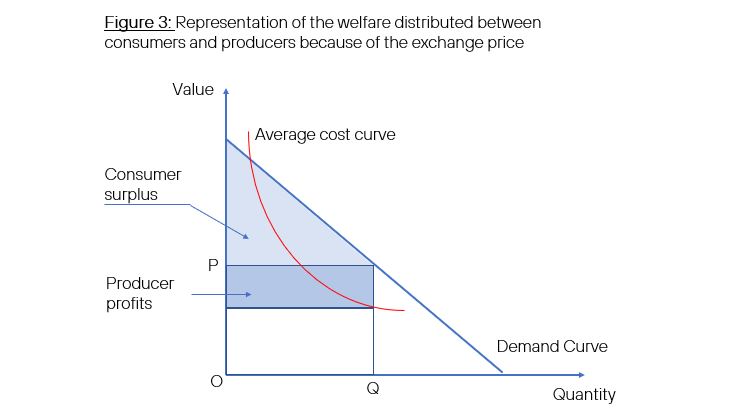
In conclusion, marketing is not merely a vehicle for businesses to promote their products; it is a powerful force that enhances economic welfare and benefits society as a whole. By creating consumer surplus through information, competition, and value-driven strategies, marketing empowers consumers, fuels economic growth, and contributes to a higher quality of life for individuals and communities alike. Understanding the pivotal role of marketing in generating consumer surplus underscores its significance in the modern world.
In conclusion, marketing transcends the conventional notion of being a mere promotional tool for businesses. It serves as a dynamic force with far-reaching implications for economic well-being and societal progress. Marketing’s ability to create consumer surplus through the dissemination of valuable information, fostering healthy competition, and prioritizing value-driven strategies underscores its multifaceted role in the modern world.
By providing consumers with access to relevant information about products and services, marketing empowers individuals to make informed choices, aligning their preferences with their needs. This informed decision-making not only enhances the consumer experience but also contributes to the efficient allocation of resources within the economy.
Furthermore, marketing’s promotion of competition among businesses drives innovation, leading to improved product quality and greater affordability. In the competitive marketplace, companies are incentivized to continuously enhance their offerings, resulting in a constant stream of new and improved products and services. This not only benefits consumers but also fuels economic growth by spurring investment and job creation.
Value-driven marketing strategies not only focus on sales but also emphasize customer satisfaction and long-term relationships. This approach fosters trust and loyalty, enabling businesses to thrive over time and, in turn, contribute to economic stability and prosperity.
Ultimately, marketing’s role in generating consumer surplus is pivotal, as it enhances the overall quality of life for individuals and communities. It empowers consumers to make choices that align with their preferences, encourages innovation and economic growth, and builds trust and satisfaction in the marketplace. Recognizing the profound impact of marketing on our lives underscores its significance as a driver of progress and prosperity in our modern society.
You can also read more about this here: GDP as a Measure of Economic Well-being
More links
Looking for more insights? You’ll find them right here in our extended coverage: Consumer Surplus Definition, Measurement, and Example
